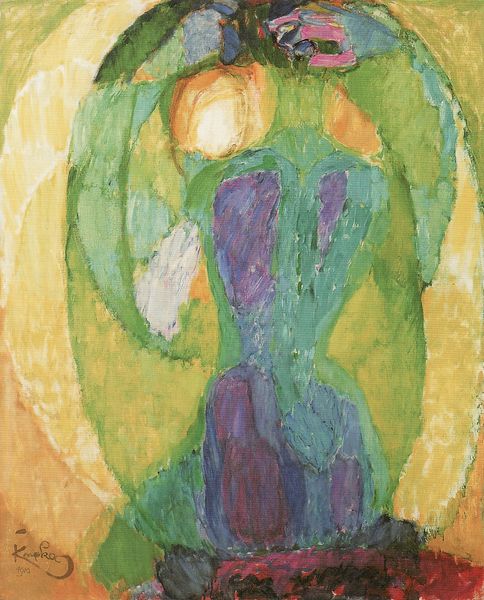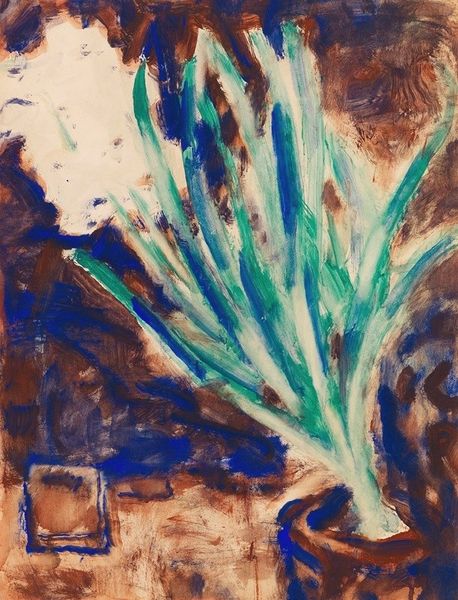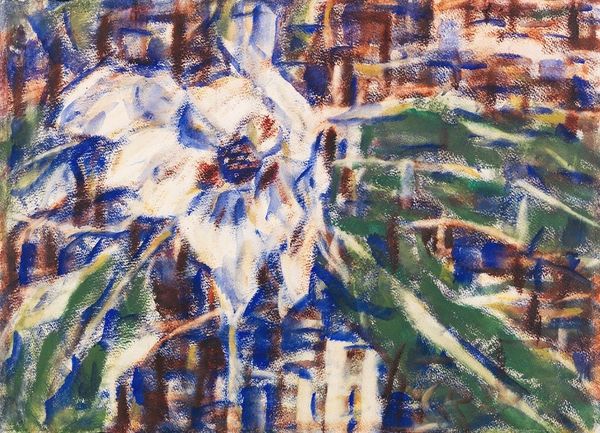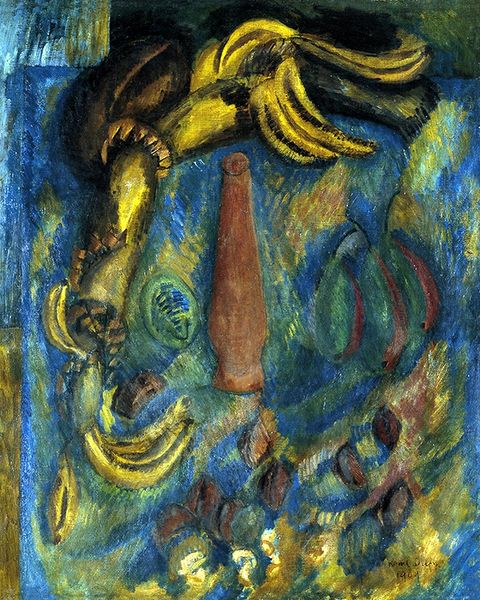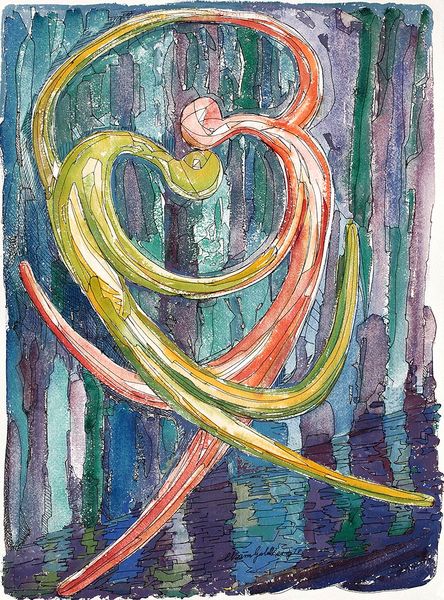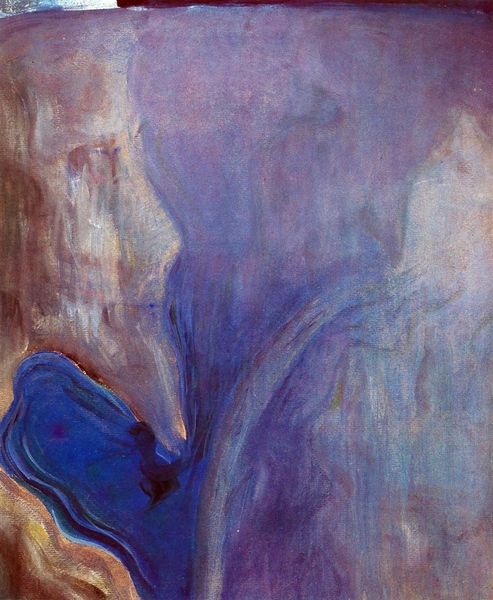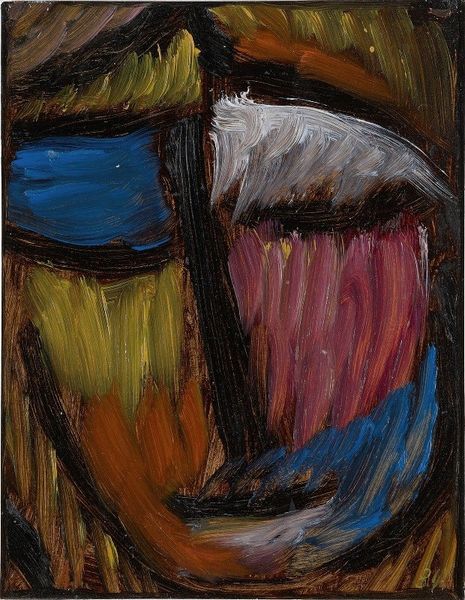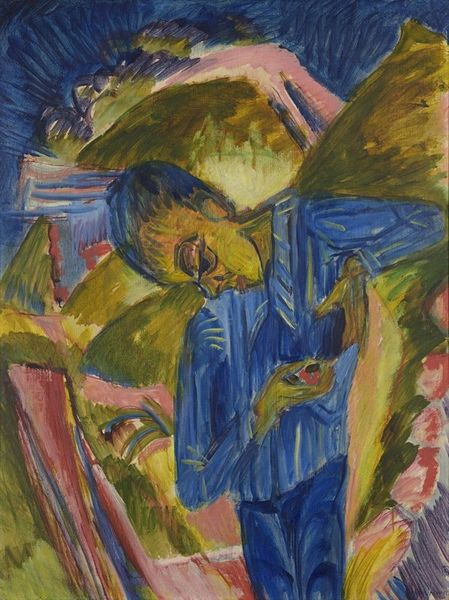
Copyright: Public domain
Editor: We are looking at Piet Mondrian's "Sun" from 1910, made with oil paint. I find the use of blues incredibly striking, giving the piece a rather dreamlike quality. How do you interpret this work, especially considering the context of its time? Curator: It's easy to see the dreamy quality in "Sun," especially when we consider Mondrian's movement towards abstraction. But what power dynamics are in play here? The symbolism of the sun, traditionally masculine, is being expressed through a softened, almost feminized lens using curvilinear shapes, as influenced by Art Nouveau. What happens when we view natural forms such as "sun" as political expressions or gestures? Editor: Political expressions through flowers, interesting! I hadn't thought about the connection to gendered symbols. Is that why the forms are not quite recognizable, playing with this theme of challenging tradition? Curator: Precisely! Think of it as a challenge to the established order, a quiet revolt. Mondrian is not just depicting a flower; he is exploring the limitations and possibilities of form itself, using his symbolic language to question the hard edges of patriarchal societal structures, echoing concurrent sentiments by various feminist theorists, such as Judith Butler, centuries later. Does this approach challenge the art historical notion of pure abstraction? Editor: Definitely. It adds layers of complexity that move beyond just formal elements. I think I see more nuances now. I had missed so much on the sociopolitical subtext before, focusing purely on its formal aesthetic. Curator: Which is exactly why, by placing Mondrian’s work within the matrix of early 20th-century gender politics, we see beyond just colour and shape, viewing this evolution towards abstraction as his commitment to revealing structures otherwise obscured from easy view. What did you learn about the artwork, overall? Editor: That everything has a deeper story to tell! I now view abstraction not just as an aesthetic choice but as a potential mode for cultural commentary. Curator: And I realize how much more activist thinking belongs within art theory. We are constantly growing our vision, understanding gender, identity and political intersectionality.
Comments
No comments
Be the first to comment and join the conversation on the ultimate creative platform.
